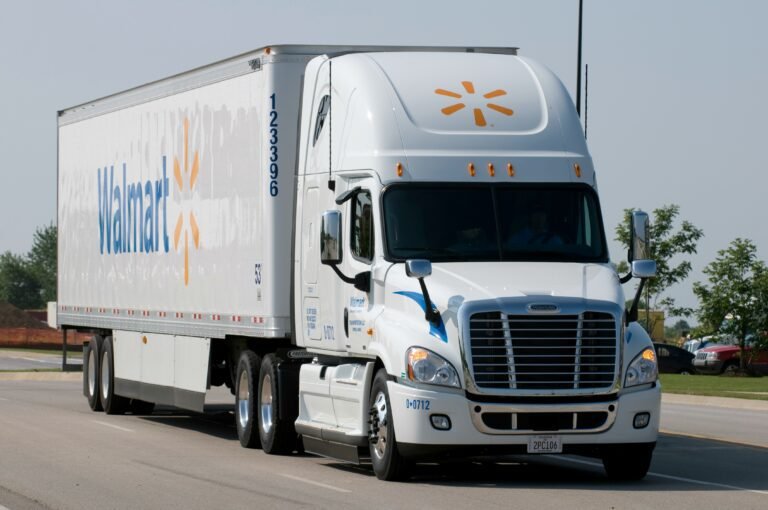American trucks have always lagged behind in efficiency, but new U.S. regulations will soon change that, says William Todts.
William Todts is the Director of the Transport Programme at the Department of Transport and Environment.
When people think of American trucks, the image that comes to mind is a big Coca-Cola truck with a big nose. These big trucks don’t look particularly efficient, and for a long time Europeans have made fun of big American trucks with big noses. Some European manufacturers have even bragged about selling old technology in the United States. But that’s about to change.
Last week, the U.S. Environmental Protection Agency, the equivalent of the European Commission’s environment directorate, announced a second set of fuel-economy and CO2 emissions standards for heavy-duty trucks. The main goal is to cut fuel consumption by 30% to 45% for new long-haul trucks, compared with 2010. The new U.S. standard challenges Europe’s truck dominance in several ways.
First and foremost, this means that, from the early 2020s at the latest, the most fuel-efficient trucks will not be sold in Europe, but in the United States. The average fuel consumption of new European trucks currently stands at around 34.5 litres/100 kilometres. The Commission expects an improvement of between 0.5% and 1% per year, although this is probably optimistic given that EU trucks have not become more efficient since the mid-1990s and the EU currently has no plans to regulate the fuel efficiency of trucks.
In the US, the average tractor-trailer consumes between 33 and 36 liters per 100 kilometers today. The new US proposal is expected to reduce this to less than 27 liters per 100 kilometers by 2027. This means that US trucks will overtake European trucks as the most efficient in the world from the early 2020s (as shown in the chart below). For European truckers, this means they are about to miss out on significant fuel savings. In fact, the EPA estimates that its new standards will save US truckers €150 billion.
The second big challenge is technological leadership. Meeting the 2027 target will require the installation of a number of technologies that are not currently standard in the United States or Europe. Standards will create a large market for technologies such as waste-heat recovery – a system developed by Bosch, among others – but also for better tires, more efficient transmissions and hybrid engines. Unless Europe acts, Daimler and Volvo will soon be selling more advanced technology across the ocean than they are on the continent.
The third big challenge is regulatory leadership. When the EU set out to develop the European truck test procedure in 2011, one of the main reasons was that European OEM Volvo wanted to create a system that could be copied around the world—similar to the Euro standards. That would make it easier to sell European trucks in places like China and help avoid imposing engine standards elsewhere. Daimler and Volvo hate the separate engine efficiency standard that the US introduced in Phases I and II.
But four years later, Europe is still slowly developing a CO2 test procedure for trucks called VECTO. The first phase is scheduled for 2016, but it will only cover a select number of vehicle classes and will not include trailers or advanced powertrains. The EU clearly doesn’t expect those vehicles to hit the market anytime soon. The U.S., meanwhile, has four years of regulatory experience. The proposed second phase will include trailers, and the test procedures have been updated to accommodate things like waste heat recovery, hybrid engines and alternative powertrains like LNG/CNG. That’s because the EPA expects the new standard to mandate the adoption of these advanced technologies.
In many developing economies, such as China and India, trucks are the main source of surface transport emissions. For these economies, the US regulatory framework will look more attractive than the one we have achieved in Europe so far.
In conclusion, the “incompetent Americans” are on our tails, and unless the European Commission finally starts taking trucks more seriously, we will be hearing jokes about old, fuel-guzzling European trucks in a few years. This is not only bad news for our self-esteem; it is also bad news for EU member states that have just signed up to the 2030 energy and climate legislation that obliges them to cut emissions from road and truck transport, and for our economy, which will lose billions of dollars in fuel savings and new jobs. Commissioner Canete and his colleagues have a tough job ahead of them.





